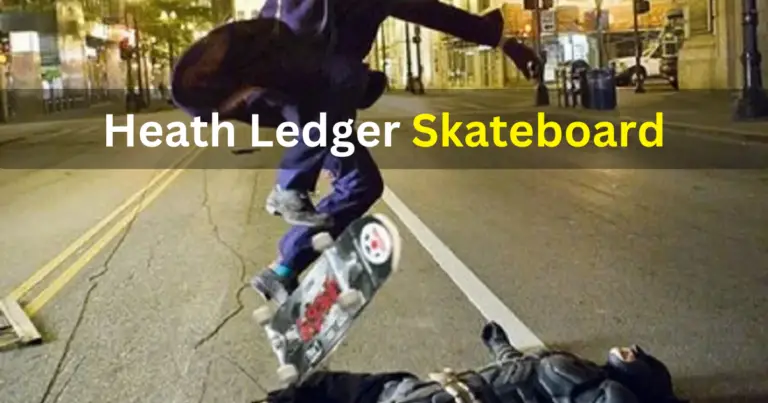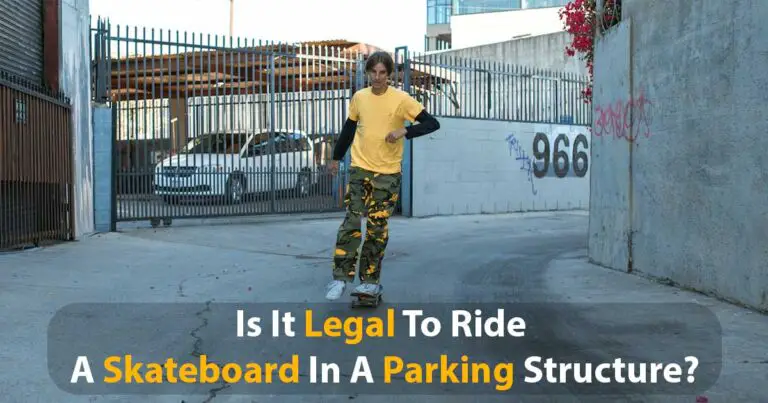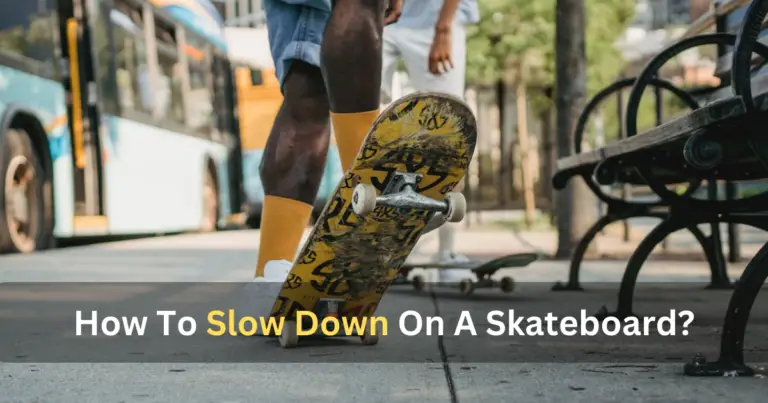
How Long Does It Take To Learn To Skateboard?
Learning to skateboard takes a few days to a week, depending on your athletic prowess, time constraints, and dedication.
Skateboarding demands years of practice; some people pick it up more quickly than others.
Here are different views on the question, “How long did it take you to learn to skateboard?” We will discuss this in our article.
Start skateboarding at a young age
Skateboarding is best to learn or start at a young age, maybe in your teens when the spirit is still young and alive.
- You must first become proficient at skating. Not only riding but also feeling at ease with it. You may also attempt to accelerate it without sliding the board. This may take a week, depending on your perseverance and how many hours you practice. If you are habitual to riding quickly, you may try bombing a hill.
- The following action was an Ollie/Shuv-it. As these are the fundamentals of flat-ground skating, it is essential to learn these two maneuvers. Once you master the Ollie, don’t try any more tricks. Ollie as high as possible since doing so will assist you with the other techniques. Ollie, your way up from minor to more incredible things.
- When you master the basics, you may learn more tricks like a 180-degree front/backside flip, a kickflip, a heelflip, a tre-flip, etc. Don’t let many failures deter you; keep trying and having fun.
How should a beginner learn to skateboard?

Everyone must begin somewhere. You’ve come to the perfect place if you want to learn how to skateboard but don’t know an ollie from an elbow.
You may learn how to choose the proper equipment for beginning to skate, how to balance while riding a board, and some advice for persevering and learning to ride.
Read:
How To Wrap A Skateboard Deck? – Step By Step Guide In 2023
1- Try to maintain your balance
There is no correct way to stand on the board; instead, find your comfort zone by placing it somewhere sturdy, like the grass or even carpet, where it will only roll around slowly. Line up your feet roughly with the truck screws and step forward.
- When you walk, your left foot is in front of your right. This often entails using your right foot to push and your left to ride.
- A goofy foot indicates you’re pushing with your left foot because your right foot is in front. There is nothing “unusual” about this attitude, despite the term. It is equally prevalent as flat feet.
- Mongo foot, which is uncommon, describes a riding position where the front foot pushes. Don’t make it a habit, even if it can first feel natural to you. When riding a mongo, you have to awkwardly swing your foot forward, which may restrict your ability to do feats. Additionally, you face a far more significant chance of having the board slide out from under you.
2- Try to move away
With your rear foot, take a long, steady step to build momentum as you stand on the board on some flat concrete.
Beginners sometimes take many quick “stabs” before starting instead of making one continuous thrust. Using a more prolonged, sweeping push-off can make the ride more comfortable and guarantee that you maintain balance.
3- Put yourself in the riding position
When you start to move, you should move your pushing foot up to rest gently on the fishtail at the rear of the board and move your riding foot sideways to more closely resemble how you stood while the board was still on the grass.
To learn to balance correctly, you should generally stand erect with a straight back and your knees slightly bent.
4- Master turning
You will move your weight forward or back from the ankle depending on your posture and whether you wish to turn right or left. Depending on how close together your trucks are and how far you want to spin, you’ll apply a different amount of pressure.
Practice starting, changing your riding position, and then securely performing a turn without falling off on a flat surface. Carving is the term used to describe the most popular style of turning.
5- Stop trying
Skateboards can get stopped in various methods, several more complex. The simplest way for a newbie is often to tail stop or gradually slow down and stop by placing a foot on the pavement.
6- Ignore tricks
The main barrier preventing newcomers from genuinely learning to skate is the desire to execute ollies without first mastering the basics.
With practice, you’ll get there, but just as you must master the basics of a guitar chord before learning to melt faces with tapping solos, you must first master the art of pushing the board and riding it gently. Before using the board to leap, you must learn to stay on it.
7- Go on skating
Skateboarding excellence requires time and work to develop. You won’t be able to master it overnight, but if you go carefully and practice as often as possible, you’ll grow better and feel more at ease using the board. Try not to lose heart.
8- Always put on a helmet and safety gear:
You must choose a skate helmet with a smooth surface and a secure chin strap to safeguard your head. You’ll probably fall often, so you must wear a helmet. Some even have a nice appearance!
9- Select a decent skating area:
The ideal surface for learning to move on would be smooth concrete without many bumps and cracks that shock you. You’ll eventually be able to skate across irregular terrain securely, but it’s best to practice in a driveway or parking lot that is mainly level and even.
10- Skate downward if you can
Beaming a more experienced skater requires you to use gravity to your advantage. Learning to deal with it and maintain control of your board early on is a good idea since the first time you start sliding downhill without pushing may be a terrifying experience.
How long does it take to learn to skateboard tricks?

The amount of time it takes to master a trick depends on various factors, but your level of skateboard comfort will have the most impact. The timeframe stated above serves as an example; for each individual, it differs significantly.
The time it takes you to learn tricks depends on various factors, including your fitness, coordination, flexibility, fear tolerance, frequency of skating, etc. Don’t give up, though. It’s crucial to study at a speed that seems natural to you and challenge yourself when ready.
How quickly can you learn the basics?
The time you need to acquire all the skateboarding abilities depends on a few variables. Before everything else, your physical prowess is crucial when joining any activity, including skateboarding. Second, having the time to study it quickly is essential.
Checking rapidly if your side allocated the time correctly would be easier. To learn as soon as possible, you must be consistent with a total, affordable amount of time each day.
What skills should I learn first skateboarding?

1- The posture
Your most comfortable posture is the first thing you need to know regarding the fundamentals of skating. Is it appropriate to try stepping on your board and visualize moving forward?
Your stance is “regular” if your left foot is more comfortable at the front of the board and “goofy” if your right foot is more at ease.
Whatever your position, it is entirely up to you whether you want to be considered normal or ridiculous. If someone calls you silly, don’t take offense—it’s only a compliment!
2- tic-tac-towing and rolling
You can attempt rolling when you’ve figured out your posture. Tic-tac is the finest approach we’ve found for novice skateboarders to get up to speed.
When you tic-tack, you put a little weight on the rear wheels, lift the front wheels off the ground, and tap the wheels to the left and right with your hips. If all goes well, you’ll start moving forward and feel like you’re executing a hula-hoop move.
3- pulling
If you want to move quicker and are confident standing on your board while it is moving, you may attempt pushing.
The back leg is the finest tool for testing. Keep your front foot forward and close to the front truck bolts to make it correctly. You should also plant your rear foot firmly on the ground and begin rolling more quickly.
4- Stopping!
Knowing how to stop is a fundamental part of skating. We advise novices to stop in one of two methods. First, you can do it by placing one foot on the ground, just as you did when pushing.
The alternative is to lean heavily over the back kick-tail, scraping the board on the floor until you completely stop. You’ve arrived when you can roll, turn, and stop comfortably. Soon enough, you’ll gain self-assurance and be able to introduce intriguing methods and simple gimmicks.
5- Techniques
Learning some tricks is the last stage in the fundamentals of skating. Try learning to manually for an excellent beginner trick. This technique is easy to understand and a fantastic place to start, but if you can master holding it, you can subsequently include the trickier combos you know.
Press down on the board’s back kick-tail until the front rises off the ground, and you only use two wheels to manual. Sounds easy, but the secret is to keep your hands on the manual for as long as possible while moving without contacting the board’s back.
Read:
Can You Put Cruiser Wheels On A Skateboard? – Differences And Instructions In 2023
Mastering Basic Skateboarding Techniques

To grasp the basics of skateboarding, you need good balance. This means learning how to ride, turn, and stop safely. Beginners should start by riding straight and gradually try small curves and different stopping methods.
Becoming skilled at this stage usually takes a few weeks of regular practice.
Progressing To Intermediate Level Skills
Skateboarders can learn intermediate-level skills once they are comfortable with the basics. These skills include ollies, kickflips, and manuals. It is important to practice each element separately before trying the whole trick.
Reaching this level may take a few months of regular practice because it involves building muscle memory and improving technique.
Advanced Skateboarding Techniques

Skateboarders need to push themselves and try more complicated tricks to improve. Learning flip tricks, grinds, slides, and airs is an example.
Advanced tricks require talent, coordination, and dedication. It can take a long time to learn these skills, depending on how committed and naturally talented a person is.
Overcoming Challenges
It’s important to understand that obstacles and failures are a normal part of learning to skateboard. Falling and getting back up is a natural part of the learning process.
When you encounter obstacles, it’s essential to stay positive, keep trying, and seek guidance from experienced skateboarders or teachers.
Staying Safe While Skateboarding
Skateboarding is dangerous, so prioritize safety. To reduce injuries, practice in a safe place, wear protective gear, and follow skate park rules. Also, stay physically fit and know your limits to stay safe while skating.
Benefits Of Skateboarding
Skateboarding has many benefits. It improves physical agility, balance, and coordination. It also encourages self-expression, creativity, and problem-solving skills. Skateboarding allows you to connect with others who have similar interests, creating a sense of camaraderie.
Required Time For Learning Skateboard Riding
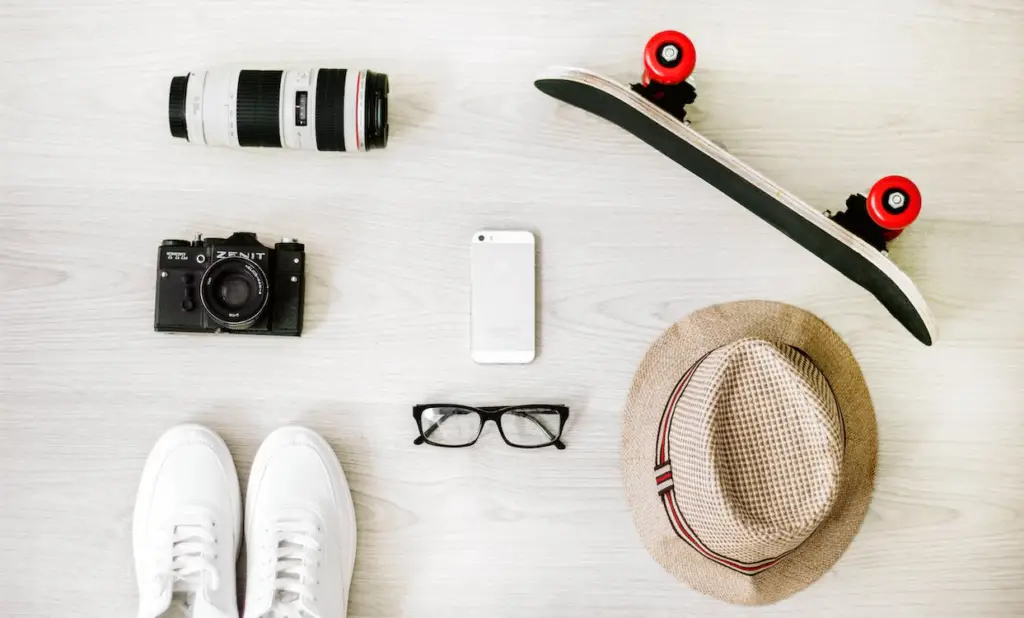
The time it takes to become good at skateboarding varies depending on different factors, like how naturally talented you are, how motivated you are, and how often you practice.
Some people learn quickly, while others take longer to get the hang of it. It usually takes a few days to a few weeks of practicing regularly before you feel confident riding a skateboard.
How Long Did It Take You To Learn How Do You Skate?
I found that the time it took me to master skating was quite variable. Skateboarding took me a few weeks to get the hang of, but it took months of practice before I felt comfortable and competent doing tricks and moves.
Age 22 And Learning Skateboard Riding
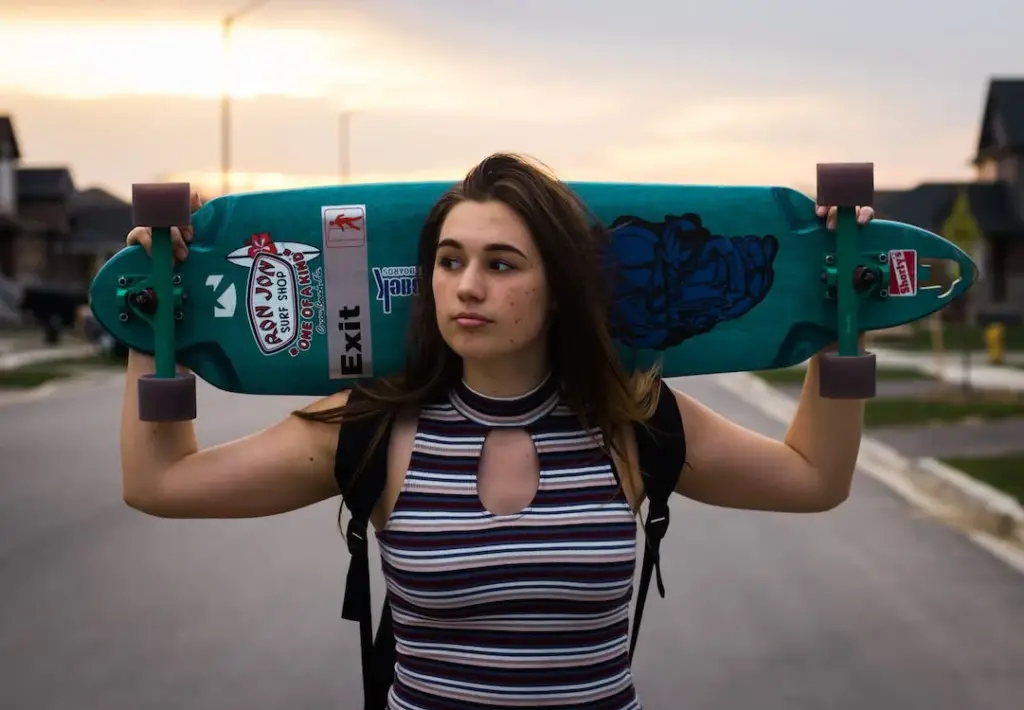
It is possible to start skateboarding at the age of 22. Everyone, regardless of age, can have fun skateboarding. Anyone can learn to skateboard with the proper instruction, patience, and practice, regardless of age.
Read:
Shipping Electric Skateboard: Domestic Vs. International Considerations In 2023
Tips for Beginners
- Beginners in skateboarding should start by learning the basics.
- This includes becoming familiar with your skateboard, finding your balance, and getting the hang of pushing and cruising.
- It’s a good idea to practice in skateparks or empty parking lots where you can enjoy the outdoors.
- Always wear protective gear like helmets, knee pads, and elbow pads during training to avoid getting hurt.
Experience The Ultimate Comfort And Ease As You Cruise, Ride, And Push Your Skateboard On The Streets
The time to feel confident riding a skateboard depends on a few things. Being consistent, committed, and naturally evolving are all important. It may take weeks or months of practice before you feel comfortable riding on the street.
How Long Did It Take You To Learn How To Glide On A Skateboard?

One of the first things a newbie learns to do on a skateboard is to learn how to glide or maintain balance and coast. Skateboarding is a skill that can be mastered with practice, but it can take a few days to several weeks.
Again, this timeframe is very variable and depends on the learner’s rate of improvement and the regularity with which they exercise.
Conclusion
Theoretically, learning how to ride a skateboard would take one day. You should be expert the bare minimum in an hour, although it will be unpleasant. Please do not give up since it will take time to become more at ease and proficient at skating.
Skateboarding is a lifetime quest for improvement and skill development. It is the finest since you may learn quickly, and you will progress. It is a fulfilling endeavor.
FAQs
Q1: Is Skateboarding Suitable For All Age Groups?
Individuals of all ages can enjoy skateboarding. However, people should consider their physical limitations and seek medical advice if they have any worries.
Q2: Can I Learn To Skateboard Without Any Prior Experience?
Absolutely! Skateboarding is a skill that can be learned from scratch. Starting with the basics and gradually progressing will help you develop the necessary skills.
Q3: How Often Should I Practice To Improve My Skateboarding Skills?
Consistency is key. Regular practice sessions, even if they are short, will yield better results than sporadic or infrequent practice. Aim for at least a few sessions per week.
Q4: How Can I Stay Motivated During The Learning Process?
Setting goals, tracking your progress, and seeking inspiration from other skateboarders can help you stay motivated. Remember to enjoy the journey and celebrate your achievements, no matter how small.
Q5: Where Can I Find Resources To Learn Skateboarding Techniques?
There are various online tutorials, skateboarding forums, and local skateboarding communities that can provide valuable resources and guidance for learning skateboarding techniques.
Q6: I need more time to learn how to skateboard.
It’s always possible. There is little of an option. Choose the board that you prefer after trying a few. Additionally, you may always attempt the alternative afterward.
Q7: How long does it typically take a beginner to learn how to skateboard?
Others may require more time, although some people may pick up skating easily and feel at ease on the board after only a few days or weeks of practice.
Q8: Does skating result in muscular growth?
According to sports experts, skateboarding is a complete exercise in and of itself. It makes strong muscles while also working the cardiovascular system.
Q8: What should you do after skating?
Sleep and relax.
Video Guide
Read Also
- Is Rollerblading Easier Than Skateboarding? -Unraveling The Ease Factor In 2023
- How Tight Should Skateboard Wheels Be? – Comprehensive Guide To Achieving Your Desired Ride 2023
- Why Do People Hate Skateboarders? – Unraveling The Reasons Behind Negative Perceptions In 2023
- Can I Ride My Electric Skateboard In The Rain? – All You Need To Know In 2023
- Can You Use Skateboard Wheels On Roller Skates? – Advantages And Disadvantages In 2023
- Heath Ledger Skateboard – Unraveling The Actor’s Skateboarding Journey 2023
